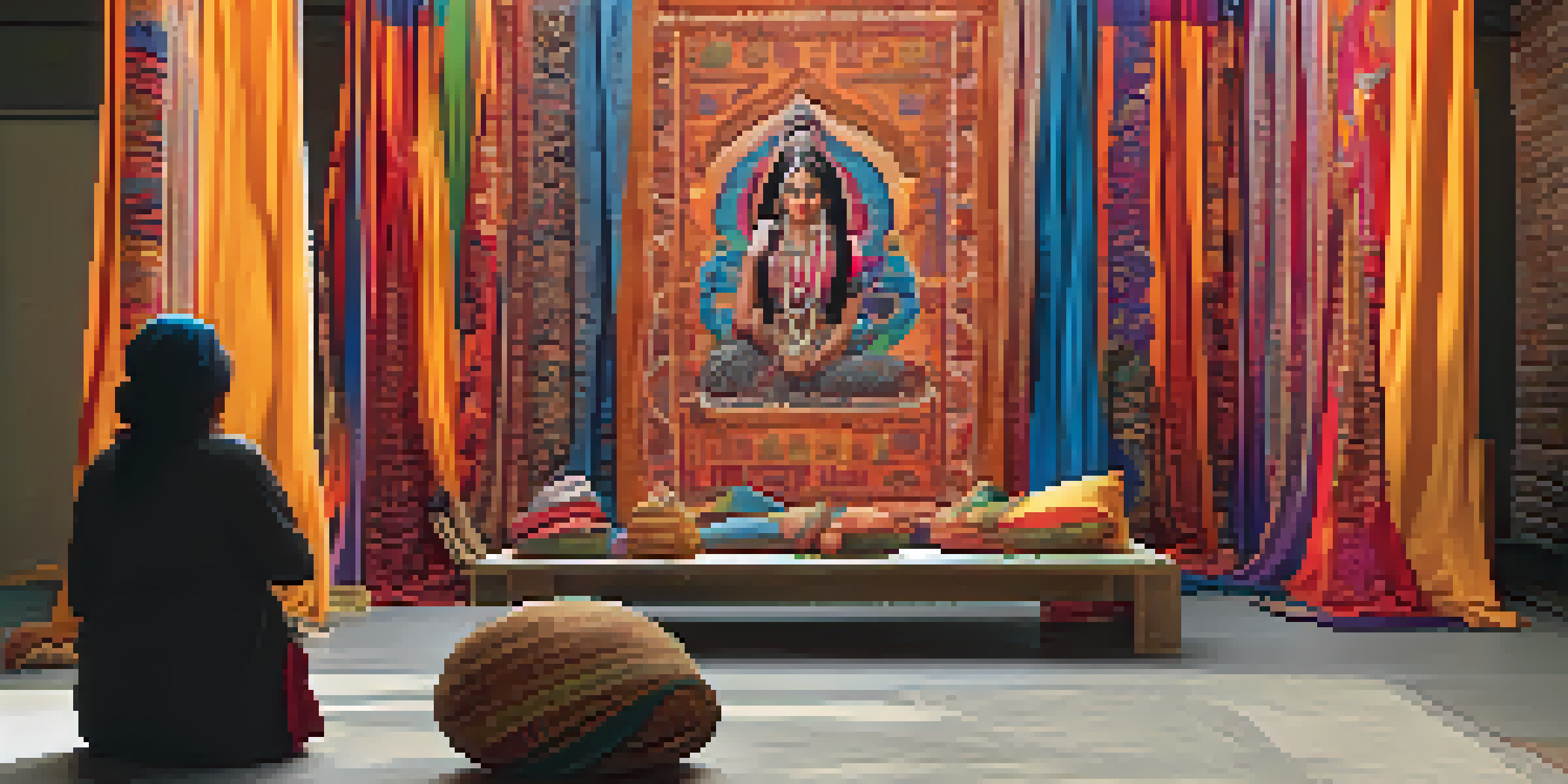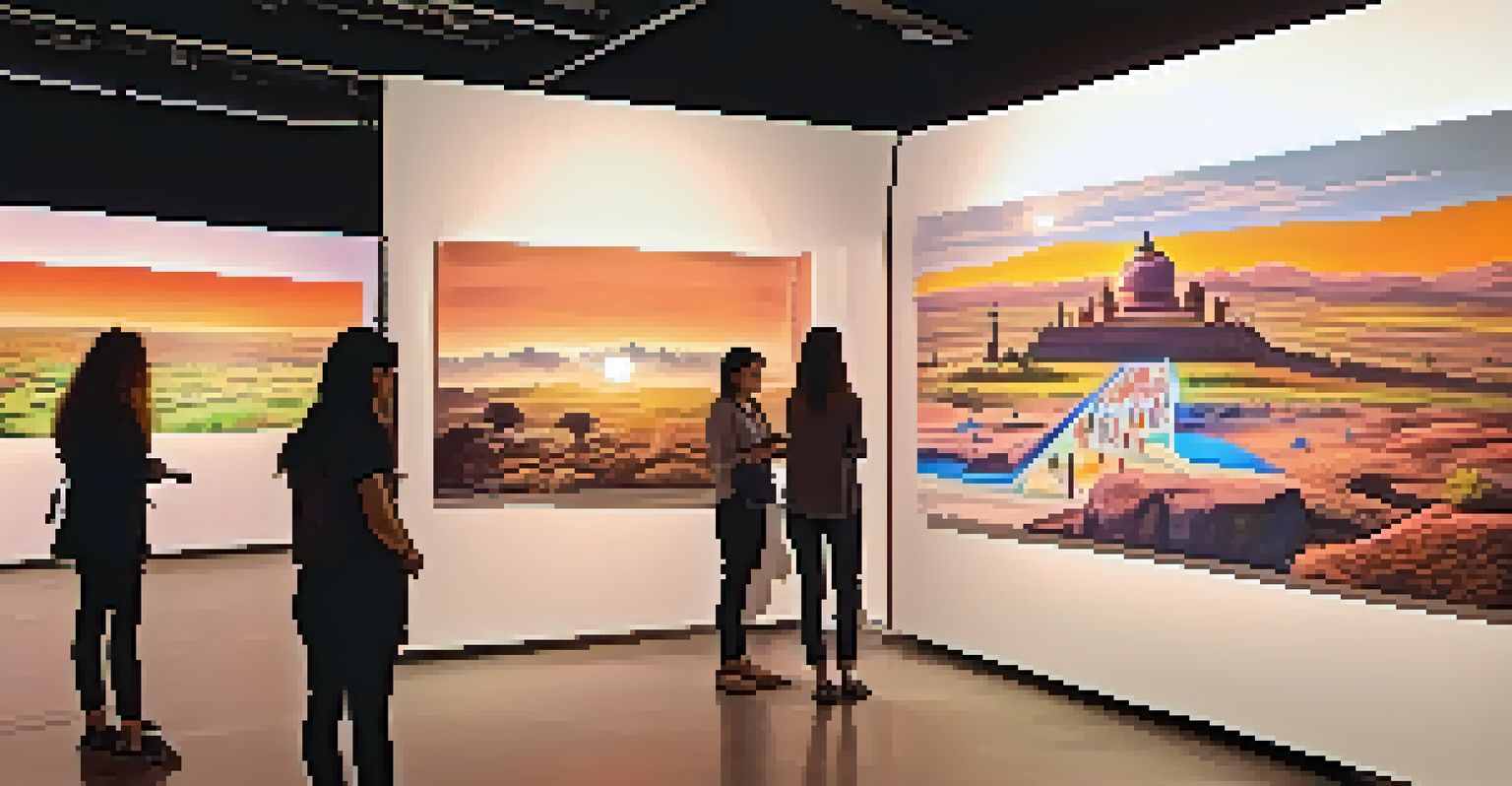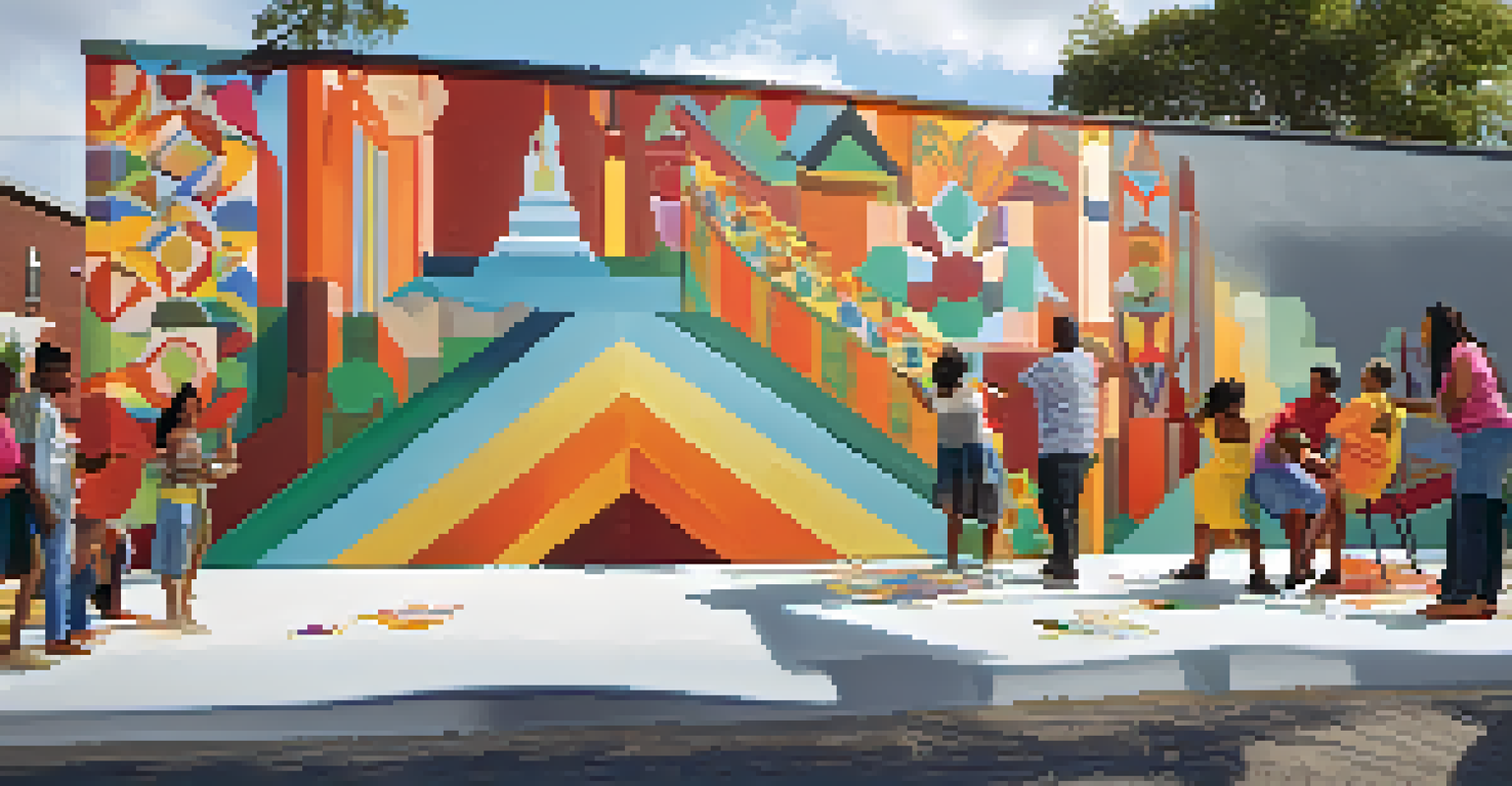Understanding the Role of Art Installations in Indian Society

The Evolution of Art Installations in India
Art installations in India have evolved significantly over the decades, reflecting the changing tides of society. Initially rooted in traditional practices, they now incorporate contemporary themes that resonate with modern audiences. This evolution signifies not just an artistic shift, but also a deeper commentary on social issues and cultural identity.
Art is not what you see, but what you make others see.
For example, installations often draw inspiration from India's rich history, blending it with current societal challenges. Artists like Subodh Gupta and Bharti Kher use everyday materials to create impactful pieces that provoke thought and discussion. This interplay between the past and present helps to keep the art scene dynamic and relevant.
Moreover, these installations often serve as a mirror to societal changes, highlighting issues such as gender equality, environmental sustainability, and urbanization. As such, they play a crucial role in fostering dialogue and encouraging community engagement around these pressing topics.
Art Installations as a Medium of Expression
For many artists in India, installations are a powerful medium for self-expression. Unlike traditional forms of art, installations allow for a multi-dimensional experience that can evoke a wide range of emotions. Artists can utilize space, sound, and light to create immersive experiences that resonate deeply with viewers.

Take, for instance, the works of artist Raqs Media Collective, who create thought-provoking installations that challenge perceptions of time and space. Their work encourages viewers to reflect on their own experiences while engaging with contemporary issues. This kind of interaction elevates art from mere observation to a personal journey.
Art Installations Reflect Society
Art installations in India have evolved to reflect contemporary societal issues while celebrating cultural heritage.
In this sense, art installations become a dialogue between the artist and the audience, inviting viewers to interpret and engage with the narrative being presented. This participatory element transforms the way art is perceived and appreciated in Indian society.
Cultural Significance of Art Installations
Art installations often serve as cultural markers, celebrating India's diverse heritage while also addressing contemporary issues. They can encapsulate the essence of various cultural narratives, allowing people to connect with their roots in a modern context. This blending of tradition and innovation fosters a sense of belonging and identity.
The role of the artist is to ask questions, not to answer them.
For example, installations during festivals often incorporate traditional motifs and materials, bridging the gap between past and present. Artists like Anita Dube create installations that evoke cultural memories, prompting viewers to reflect on their own backgrounds. This creates a space for cultural dialogue and appreciation.
Moreover, these installations often act as a platform for marginalized voices, empowering underrepresented communities to share their stories. By showcasing diverse perspectives, art installations contribute to a richer cultural tapestry in India.
The Impact of Technology on Art Installations
In recent years, technology has revolutionized the way art installations are created and experienced in India. From interactive digital displays to augmented reality, artists are using technology to push the boundaries of traditional art forms. This integration allows for a more engaging and immersive experience for the audience.
Consider the work of artists like Shilpa Gupta, who utilizes digital media to create installations that challenge notions of identity and borders. Her use of technology not only enhances the visual appeal but also deepens the conceptual framework of her work. This fusion of art and technology is reshaping the landscape of contemporary art in India.
Community Engagement through Art
Collaborative art installations foster community bonds and encourage dialogue on important local issues.
Additionally, technology can help reach a wider audience, breaking geographical barriers. Virtual exhibitions and online platforms allow people from all over the world to engage with Indian art installations, fostering global conversations and collaborations.
Art Installations as Community Engagement Tools
Art installations can play a pivotal role in fostering community engagement and participation. Many artists collaborate with local communities to create installations that reflect shared experiences and collective narratives. This collaborative approach not only enhances the artwork but also strengthens community bonds.
For instance, community art projects often involve residents in the creation process, allowing them to express their stories and perspectives. This sense of ownership can lead to increased pride in local culture and heritage. It also encourages dialogue among community members, creating a platform for discussing important issues.
By transforming public spaces into interactive art venues, installations can invite broader participation from the community. This turns art into a catalyst for social change, encouraging people to come together and engage with one another in meaningful ways.
Challenges Facing Art Installations in India
While art installations play a significant role in society, they also face several challenges in India. One major obstacle is the lack of funding and support for contemporary artists. Many talented individuals struggle to find resources to create and showcase their work, which can stifle creative expression.
Additionally, the rapidly changing political climate can pose risks for artists, especially those addressing sensitive topics. Censorship and societal pushback can hinder the freedom of expression that is essential for impactful art installations. This creates an environment of fear that can limit artistic exploration.
Technology Transforms Artistic Expression
The integration of technology in art installations enhances viewer engagement and broadens the reach of Indian art.
Despite these challenges, many artists continue to push boundaries and advocate for their right to express themselves. Their resilience is crucial to ensuring that art installations remain a vital part of the cultural landscape in India.
The Future of Art Installations in Indian Society
Looking ahead, the future of art installations in India appears promising as artists continue to innovate and explore new themes. The integration of technology and social issues will likely play a central role in shaping the next generation of installations. Artists are increasingly aware of their social responsibilities and are using their platforms to address pressing concerns.
Moreover, as more people become aware of and engage with contemporary art, there is potential for increased support and funding for installations. This could lead to more diverse perspectives being represented in the art world, enriching the overall cultural narrative.

Ultimately, the future of art installations in India hinges on the ability of artists to adapt and respond to the ever-evolving societal landscape. As they continue to inspire and provoke thought, these installations will remain a vital component of India's cultural identity.